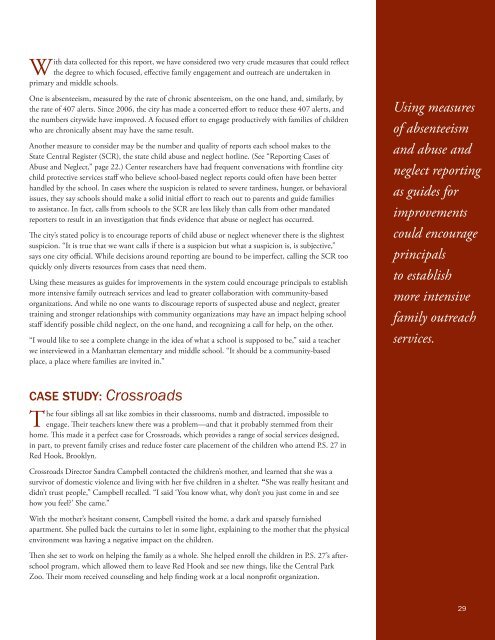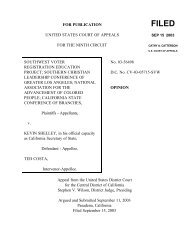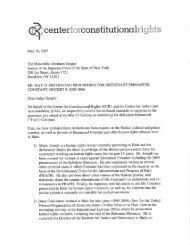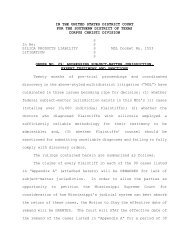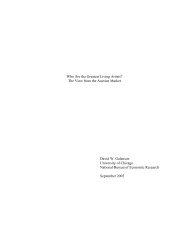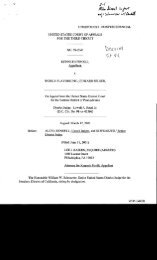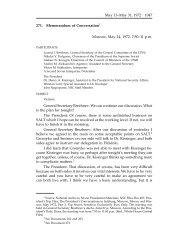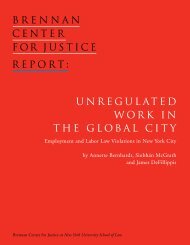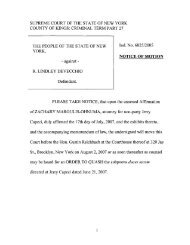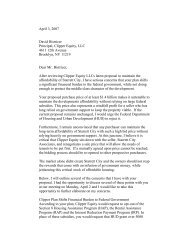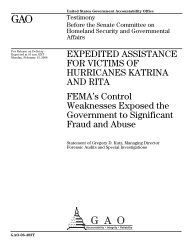Strengthening Schools by Strengthening Families
Strengthening Schools by Strengthening Families
Strengthening Schools by Strengthening Families
Create successful ePaper yourself
Turn your PDF publications into a flip-book with our unique Google optimized e-Paper software.
With data collected for this report, we have considered two very crude measures that could reflect<br />
the degree to which focused, effective family engagement and outreach are undertaken in<br />
primary and middle schools.<br />
One is absenteeism, measured <strong>by</strong> the rate of chronic absenteeism, on the one hand, and, similarly, <strong>by</strong><br />
the rate of 407 alerts. Since 2006, the city has made a concerted effort to reduce these 407 alerts, and<br />
the numbers citywide have improved. A focused effort to engage productively with families of children<br />
who are chronically absent may have the same result.<br />
Another measure to consider may be the number and quality of reports each school makes to the<br />
State Central Register (SCR), the state child abuse and neglect hotline. (See “Reporting Cases of<br />
Abuse and Neglect,” page 22.) Center researchers have had frequent conversations with frontline city<br />
child protective services staff who believe school-based neglect reports could often have been better<br />
handled <strong>by</strong> the school. In cases where the suspicion is related to severe tardiness, hunger, or behavioral<br />
issues, they say schools should make a solid initial effort to reach out to parents and guide families<br />
to assistance. In fact, calls from schools to the SCR are less likely than calls from other mandated<br />
reporters to result in an investigation that finds evidence that abuse or neglect has occurred.<br />
The city’s stated policy is to encourage reports of child abuse or neglect whenever there is the slightest<br />
suspicion. “It is true that we want calls if there is a suspicion but what a suspicion is, is subjective,”<br />
says one city official. While decisions around reporting are bound to be imperfect, calling the SCR too<br />
quickly only diverts resources from cases that need them.<br />
Using these measures as guides for improvements in the system could encourage principals to establish<br />
more intensive family outreach services and lead to greater collaboration with community-based<br />
organizations. And while no one wants to discourage reports of suspected abuse and neglect, greater<br />
training and stronger relationships with community organizations may have an impact helping school<br />
staff identify possible child neglect, on the one hand, and recognizing a call for help, on the other.<br />
“I would like to see a complete change in the idea of what a school is supposed to be,” said a teacher<br />
we interviewed in a Manhattan elementary and middle school. “It should be a community-based<br />
place, a place where families are invited in.”<br />
CAsE sTUDY: Crossroads<br />
The four siblings all sat like zombies in their classrooms, numb and distracted, impossible to<br />
engage. Their teachers knew there was a problem—and that it probably stemmed from their<br />
home. This made it a perfect case for Crossroads, which provides a range of social services designed,<br />
in part, to prevent family crises and reduce foster care placement of the children who attend P.S. 27 in<br />
Red Hook, Brooklyn.<br />
Crossroads Director Sandra Campbell contacted the children’s mother, and learned that she was a<br />
survivor of domestic violence and living with her five children in a shelter. “She was really hesitant and<br />
didn’t trust people,” Campbell recalled. “I said ‘You know what, why don’t you just come in and see<br />
how you feel?’ She came.”<br />
With the mother’s hesitant consent, Campbell visited the home, a dark and sparsely furnished<br />
apartment. She pulled back the curtains to let in some light, explaining to the mother that the physical<br />
environment was having a negative impact on the children.<br />
Then she set to work on helping the family as a whole. She helped enroll the children in P.S. 27’s afterschool<br />
program, which allowed them to leave Red Hook and see new things, like the Central Park<br />
Zoo. Their mom received counseling and help finding work at a local nonprofit organization.<br />
Using measures<br />
of absenteeism<br />
and abuse and<br />
neglect reporting<br />
as guides for<br />
improvements<br />
could encourage<br />
principals<br />
to establish<br />
more intensive<br />
family outreach<br />
services.<br />
29


